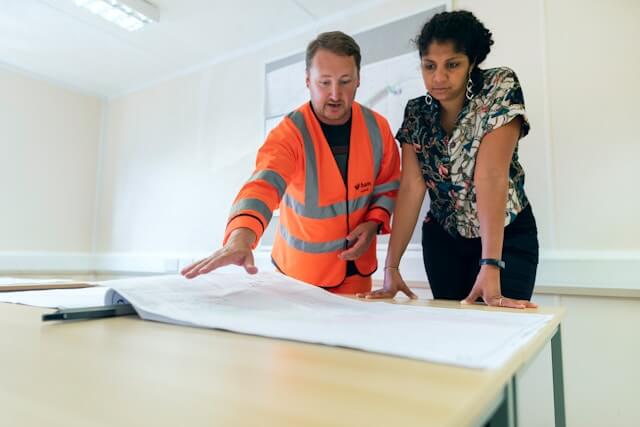
The majority of work-at-height fatalities involve falls from ladders, working platforms, roof edges, etc. Because of this, employers and self-employed contractors must carry out comprehensive working at height risk assessments to identify possible hazards and determine what precautions are needed.
According to the HSE (Health and Safety Executive), in order to manage risk when working at height, you or an appointed competent person must complete the following steps:
- Assess the risks
- Identify relevant precautions
- Produce a method statement
Let’s take a closer look at those three steps…
Assess the risks
Following HSE's guidance, in the first step of a working at height risk assessment you must identify possible hazards, weigh up the likelihood of someone getting harmed, and evaluate how serious the damage could be.
Risks will vary from one job to the next, of course, but if you’re working at height then the most common risks are...
- Falling from height
- Dropped equipment
- Fragile surfaces
- Mistakes with ladders
Once you have identified any hazards/risk factors, you must then take the necessary steps to ensure the work is “properly planned, supervised and carried out in a safe manner.”
Identify relevant precautions
When approaching work at height, you should follow the HSE’s work at height hierarchy of controls. This list of controls must be followed systematically; only when one is not practicable should you consider the next option.
For example, here are the first two options:
- “Avoid working at height unless it is essential e.g. erect guard rails on steelwork at ground level and then crane the steel and the guard rails into position; provide cast in mesh across riser ducts at the position of services; fix nets using extending poles.
- Prevent falls by using an existing safe place of work that does not require the use or addition of work equipment to prevent a fall e.g. a flat roof with permanent edge protection.”
So, the first thing you should always do is consider if working at height can be avoided. Only if it cannot be avoided, should you move on to follow the next option, and so on.
Produce a method statement
It’s important to record the risks and precautions associated with specific work at height jobs and communicate them with everyone involved. This is called a method statement and is the final stage of a working at height risk assessment.
There are no set requirements for an effective method statement. They can vary in length but should always be clear and concise, leaving no room for confusion. They may also include a few simple sketches to add further explanation.
Working at height safety equipment
Here at Safety Harness Direct, we specialise in safety gear designed specifically for work at height. We work closely with trusted manufacturers to bring you the best equipment on the market. To browse our safety gear, click the button link below.
Working at Height Safety Gear

